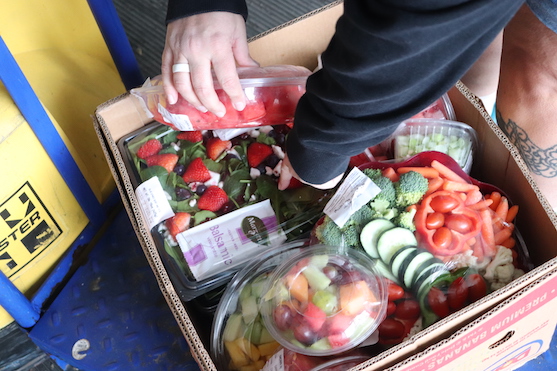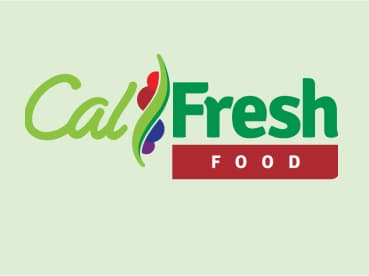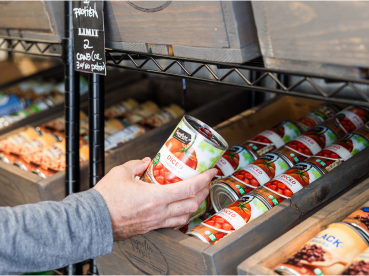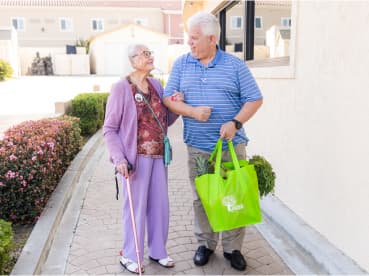
Fresh Rescue
Program
Fresh Rescue is a food recovery program implemented by the San Diego Food Bank to reduce food insecurity and food waste by recovering wholesome, edible food and distributing it to individuals and families in need county-wide. Through specialized trainings and trusted partnerships, the San Diego Food Bank creates a safe, reliable network for food vendors to donate surplus food to verified nonprofit partners for community distribution.
How Does It Work?
Food donors, such as grocery stores, distributors, caterers, cafeterias and restaurants will set aside edible, surplus food for a nonprofit partner to collect on a predetermined schedule, or as needed basis. After the food is recovered, our nonprofit partners will weigh and record the food by product type in our online web portal.* Once the food is documented, it will be distributed to community members in need.
*The pick-up information inputted into our online web portal will be generated into receipts that can be sent to the donor.

Why Does Food Recovery Matter?
Food recovery helps feed those in need, while also reducing your carbon footprint. While up to 40% of all edible food is wasted in the United States, 1 in 3 people in San Diego County are food insecure. In addition, food waste decomposition in landfills is a significant source of methane emissions, which can lead to ozone depletion and climate change acceleration. These environmental impacts have led states to adopt new legislation to monitor edible food waste, such as Senate Bill 1383 in California.
Information About SB 1383
Senate Bill 1383, which goes into effect January 1, 2022, is an environmental law that was passed in order to reduce methane emissions in California through organic waste recycling. Certain food businesses will be required to donate the maximum amount of surplus edible food that is fit for consumption to food recovery organizations such as the San Diego Food Bank. Joining a food recovery program like the Fresh Rescue Program ensures that your edible food recovery needs are met in compliance with SB 1383. Have additional questions about SB 1383? Please visit CalRecycle or read our blog post to learn more.
How to Join or Support the Program
If you are ready to donate food or if you are a food recovery agency seeking to join the program, please contact the Food Procurement Team at DonateFood@sandiegofoodbank.org to learn more.
Explore Other Food Bank Programs

Need Food?
Get food assistance in your local area. The Food Bank works with nonprofits to distribute food in your area. Use our food locator to find a nonprofit in your area that can help. Click on the Find Food button below.


